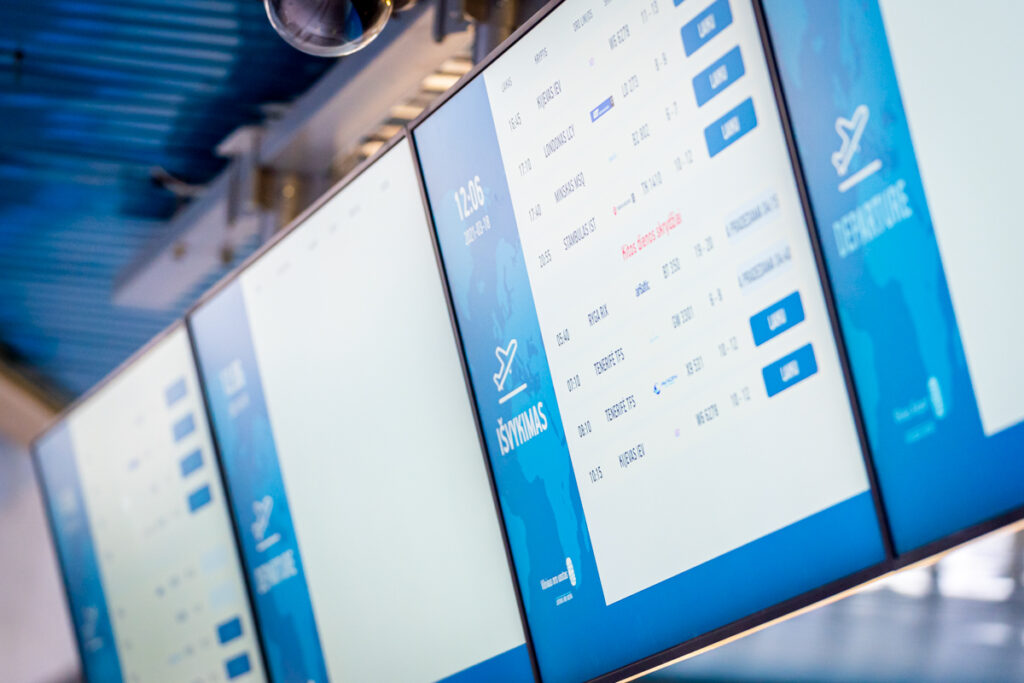Lithuanian Airports has completed the installation of a new airport management system at Vilnius, Kaunas and Palanga airports, which is designed to enhance the passenger experience, increase operational efficiency and modernize airport operations management.
The new SITA Airport Management system was installed alongside the SITA Information Display System, which includes hundreds of flight information displays that will clearly display check-in counter, boarding gate or baggage belt information to passengers and internal airport stakeholders.
According to the airport operator, the systems will increase operational efficiency by automatically processing flight updates received from standard aviation feeds. Until now, the three airports used three different operations management systems, and maintaining them was challenging and time-consuming.
The new system allows airport operators to make timely decisions and automatically allocate airport resources like check-in desks, boarding gates and baggage claim belts. It enables a more planned, fluid and automated approach to operations, freeing up airport teams to better handle any exceptions which require their personal attention.
Dainius Čiuplys, head of operations and infrastructure at Lithuanian Airports, said, “For us, interconnecting various systems under one roof, digitizing processes and increasing operational effectiveness is of key importance. We operate more than 200 information screens at our three airports, all of which must be aligned by one common system. The system must ensure that the screens show relevant, correct information at the right locations at the airport, in real time. We are confident that this new state-of-the-art system will help administer all airport operations with greater efficiency and accuracy.”
Sergio Colella, SITA president for Europe, added, “SITA’s Airport Management System not only allows for communicating timely flight and safety information to passengers, but it also helps Lithuanian Airports work closer with the airlines, government agencies and ground handlers to achieve more efficient airport operations. Collaboration with key stakeholders is essential to improve planning, anticipate possible problems and enable fast responses in case of any disruption. This has a significant impact on the passenger journey, resulting in a more fluid and frictionless travel experience. We are pleased to have delivered new capabilities to each of these three airports and to continue assisting them in further operational improvements.”

